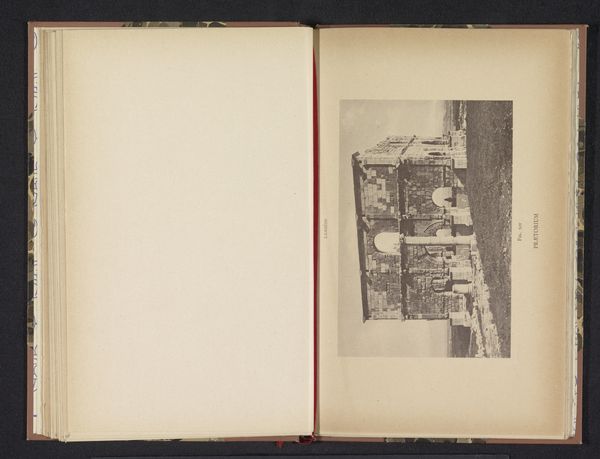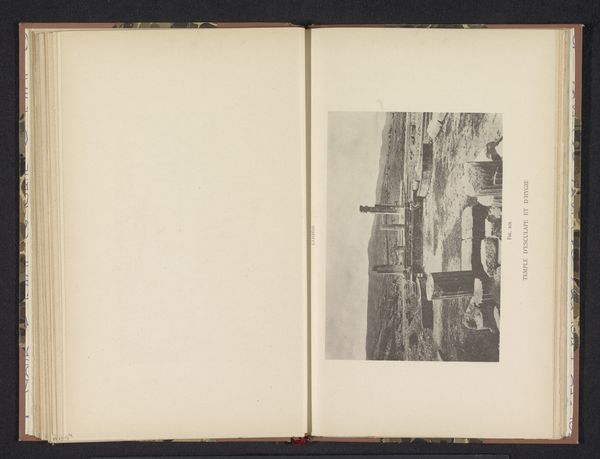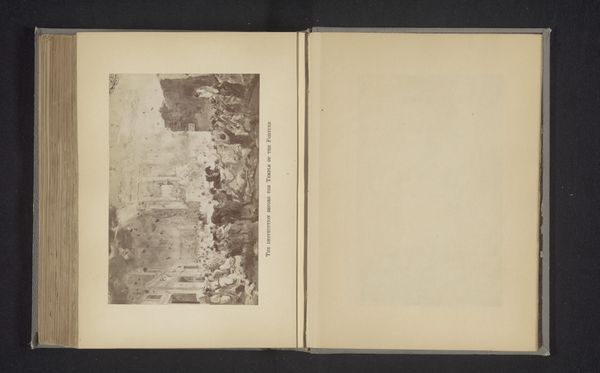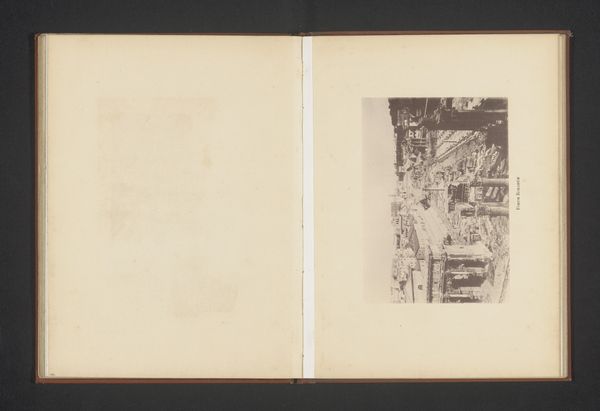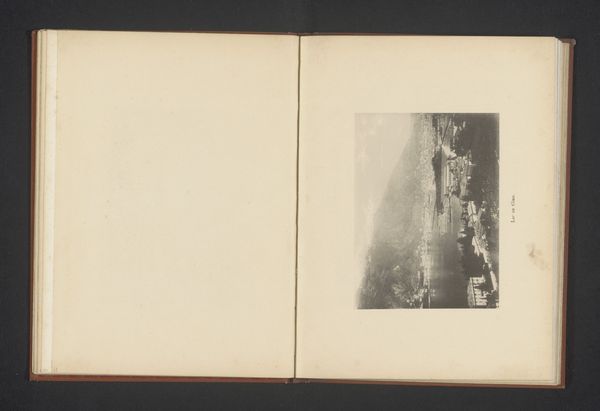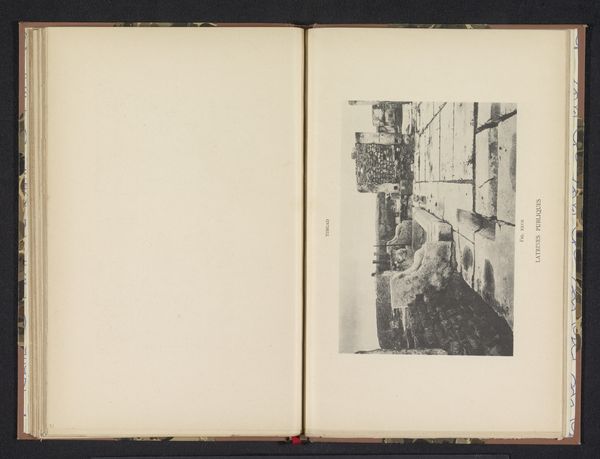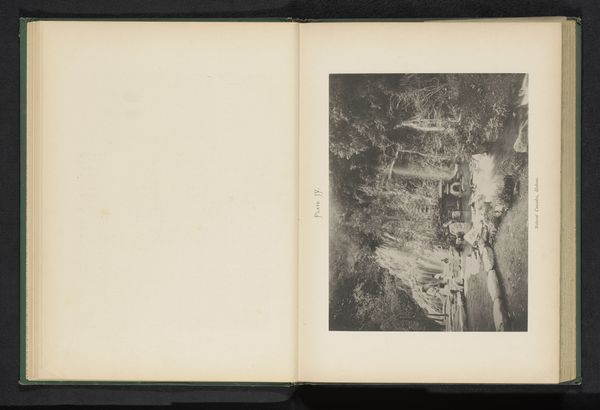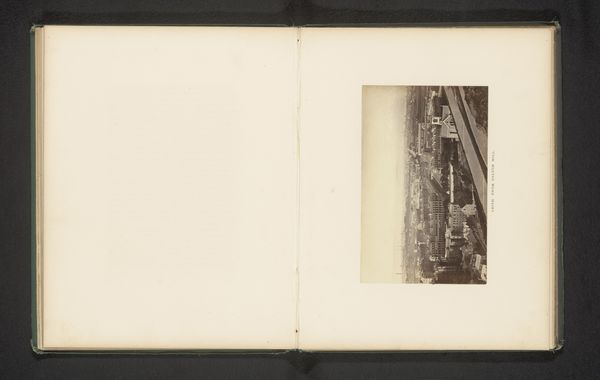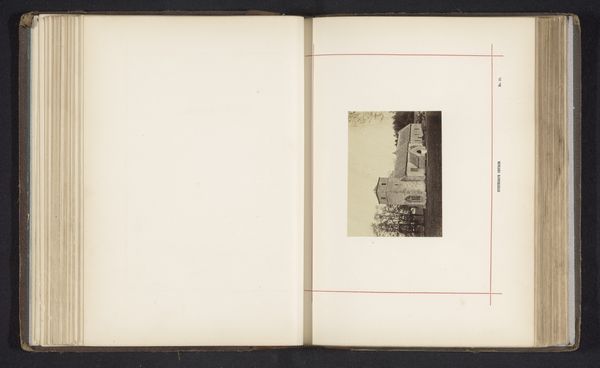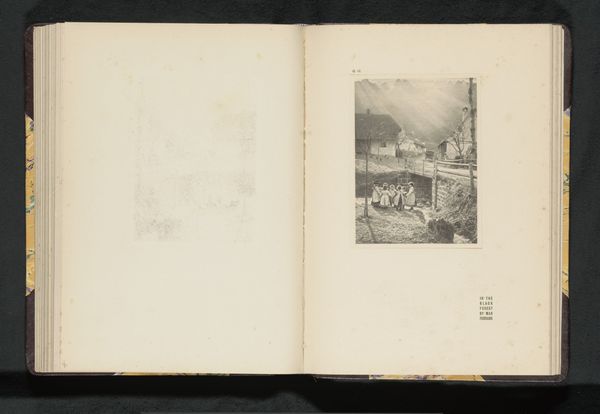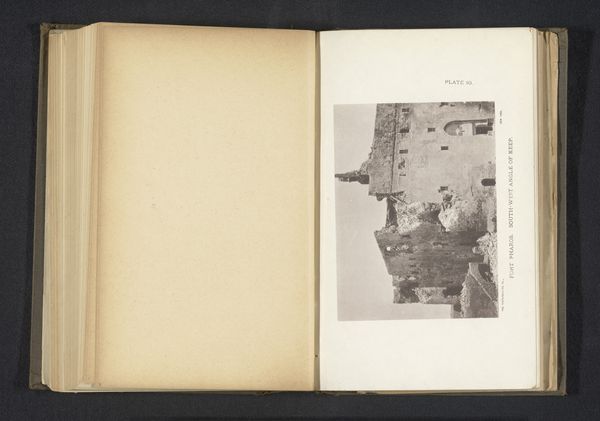
Interieur van de ruïne van een Romeins poortgebouw bij Lambaesis in Algerije before 1894
0:00
0:00
print, photography, gelatin-silver-print
# print
#
landscape
#
photography
#
romanesque
#
geometric
#
ancient-mediterranean
#
gelatin-silver-print
Dimensions: height 105 mm, width 154 mm
Copyright: Rijks Museum: Open Domain
Editor: This gelatin silver print, taken before 1894, is titled "Interior of the ruins of a Roman gatehouse at Lambaesis in Algeria." There's a real sense of weight and history radiating from it. The ruined architecture feels both grand and melancholy. What do you see in this piece? Curator: It's a fascinating image precisely because it documents a specific historical moment through a particular lens. The crumbling architecture of Lambaesis isn't just a visual subject, but evidence of Roman power and its subsequent decline. How do you think the act of photographing ruins impacts our understanding of that power dynamic? Editor: I hadn't considered that! The choice to capture ruins makes a statement. It's not celebrating imperial power, but showing its vulnerability and eventual decay. Curator: Exactly! The photographer is, in effect, participating in a longer historical narrative about the shifting sands of empires and the institutional legacy of such endeavors. The ruins themselves are an artifact but this image of those ruins also becomes an artifact worthy of interpretation and understanding in an even greater socio-political context. How do you interpret the stark contrasts within the gelatin silver print? Editor: Well, the stark contrasts enhance the drama, highlighting the play of light and shadow within the ruins. Maybe the photographer was attempting to infuse a sense of timelessness into a document that is by its nature documenting loss. Curator: That’s insightful. By choosing this stark representation of shadow and light, they create a certain kind of feeling in the image, perhaps reinforcing the gravity and remoteness of the scene while speaking volumes about colonial visual culture and its methods. Editor: Thinking about it that way really changes my perspective! I initially just saw it as a picture of old ruins, but now it’s loaded with questions about power, representation, and history. Curator: Indeed! And this awareness, hopefully, encourages continued thoughtful reflection regarding our place and perspective in an ever changing and increasingly mediated world.
Comments
No comments
Be the first to comment and join the conversation on the ultimate creative platform.
